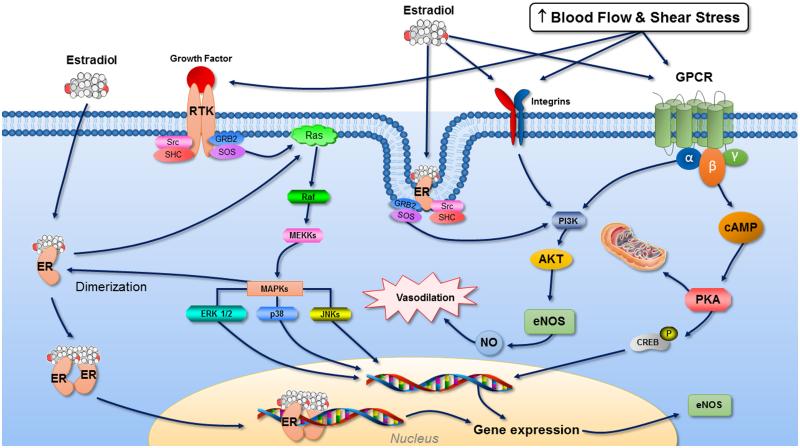Figure 4.
Proposed synergistic role between estrogen and exercise in modulating intracellular signaling and gene expression in endothelial cells. Estrogen and exercise share common intracellular signaling pathways to mediate NO release, and thus, estrogen may enhance exercise-induced increases in shear stress-associated signal transduction to increase NO production and vasodilation. Estrogen receptors (ER) found on the cell membrane and cytoplasm, particularly ERα, are involved with the transduction of the nongenomic effects of estrogen through second messengers such as nitric oxide (NO), receptor tyrosine kinases (RTKs), integrins, G-protein–coupled receptors (GPCRs), as well as protein kinases including phosphatidylInosiol-3-kinase (PI3K), serine-threonine kinase Akt, mitogen-activated protein kinase (MAPK), and protein kinases (PKA and PKC). Similarly, exercise increases blood flow and shear stress along the surface of endothelial cells, stimulating mechanosensors including GPCRs, integrins, cavoeloae and RTKs and activating protein kinases to phosphorylate and activate eNOS and release NO. Both estrogen and exercise also increase transcriptional regulation of the eNOS gene in the nucleus. Prolonged estrogen deficiency decreases ERα expression due to aging and oxidative stress, resulting in impaired ERα/eNOS signaling, and thus, we postulate that the lack of exercise benefit in estrogen-deficient women may be related to reduced ERα and eNOS activation.

